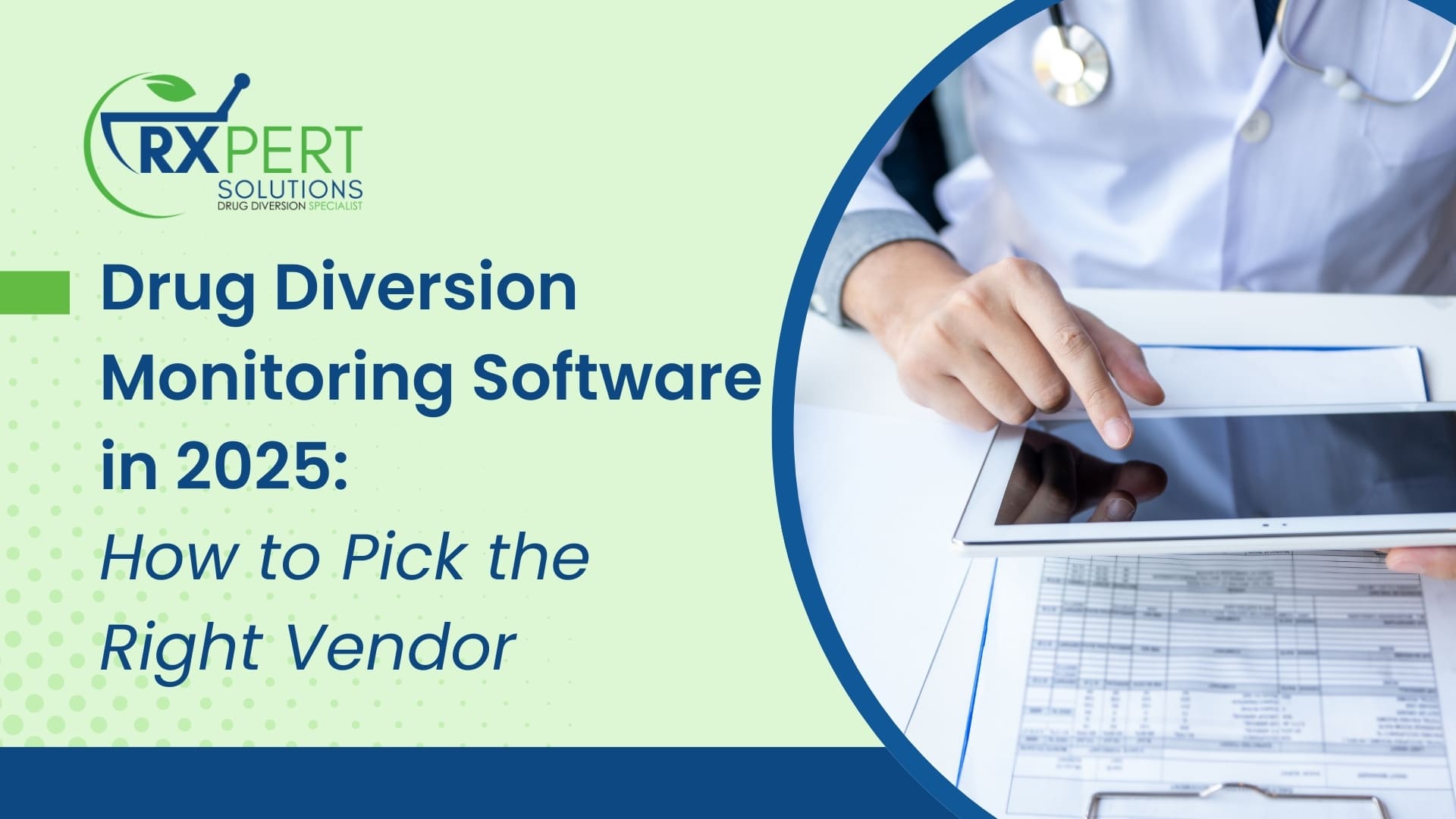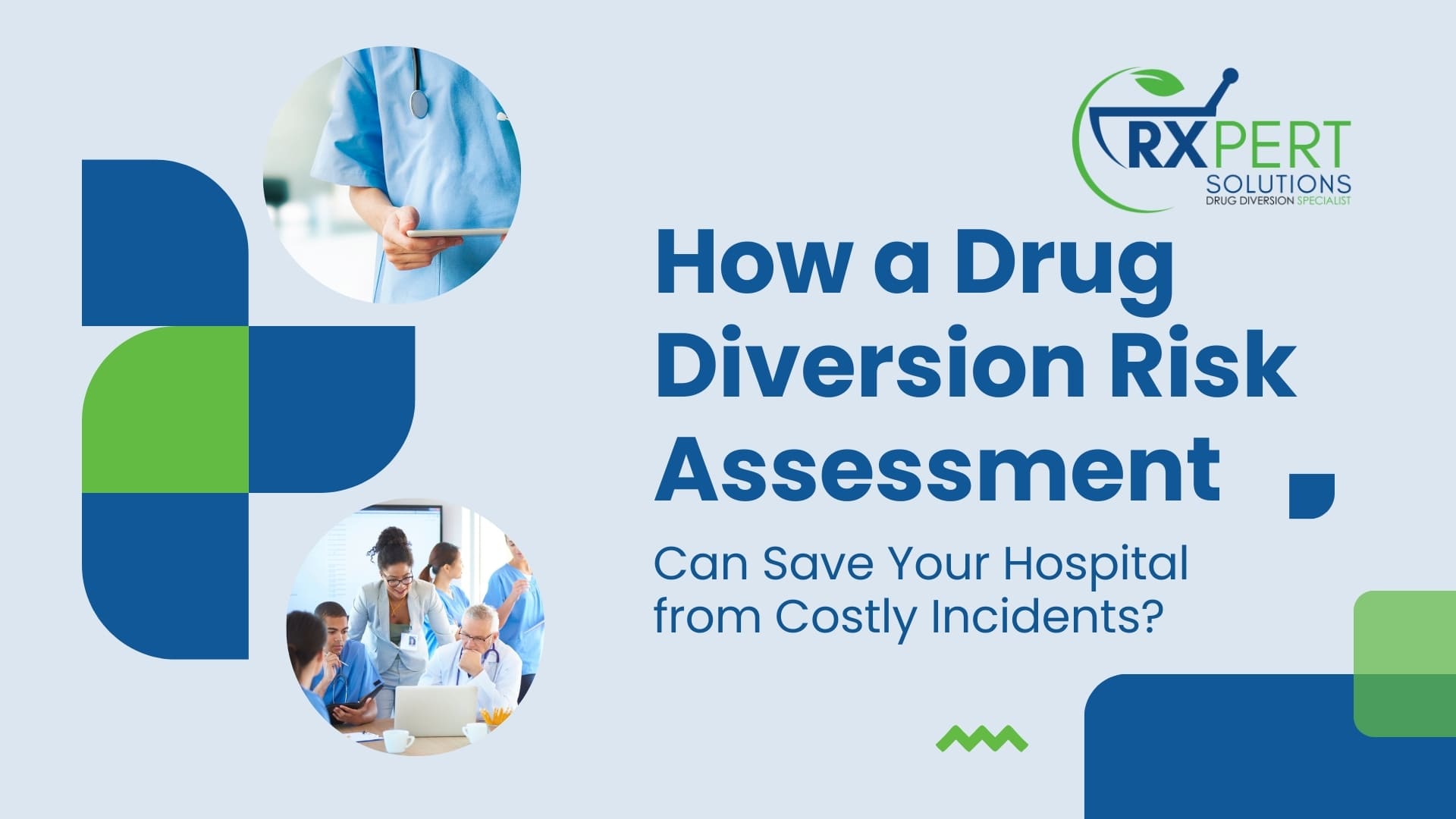In the world of healthcare, the issue of drug diversion remains a critical concern. A recent case involving a Virginia pharmacist provides valuable insights into the complex interplay between substance use disorders (SUDs) and drug diversion in healthcare settings. This blog post examines the case, highlighting key lessons for improving diversion mitigation strategies.
The Case at a Glance
From May 2023 to May 2024, a pharmacist at Market Street Pharmacy in New Castle, Virginia, diverted over 6,000 tablets/capsules of controlled substances for personal use. The case unveils a troubling narrative of addiction, professional misconduct, and the dire need for robust mitigation measures.
Diversion Tactics and Red Flags
The pharmacist employed a sophisticated method to divert medications:
He manipulated the pharmacy’s software system by adding fake prescription numbers and associated quantities to the C-II inventory log. This single tactic allowed him to:
1. Alter the perpetual C-II inventory, creating a false paper trail.
2. Change the balance on hand in the dispensing software.
3. Conceal the diversion of over 6,000 tablets/capsules of controlled substances.
Key Takeaways:
1. This case highlights the critical need for robust software security measures and regular audits of prescription records and inventory changes in pharmacy settings.
2. Implementing comprehensive accountability measures for all aspects of the pharmacy workflow is crucial. This includes:
– Regular cross-checks of inventory against dispensing records
– Periodic review of software access logs
– Dual verification for inventory adjustments
– Routine analysis of prescribing patterns and prescription validity
A Pharmacist’s Journey: The Road to Diversion
The case provides a stark illustration of how substance use disorder (SUD) can develop and impact healthcare professionals. Let’s trace this pharmacist’s journey:
- Origins of Dependency: 14 years prior, the pharmacist was prescribed opioid pain medication for chronic knee pain. Over time, he developed a tolerance and began taking more than prescribed.
- Escalation: His use escalated to the point where he was referred to pain management and prescribed oxycodone for chronic pain.
- Transition to Maintenance Therapy: As his opioid use increased, he was transitioned to methadone for approximately five years to treat both chronic pain and opioid dependence.
- Relapse and Diversion: In July 2023, the pharmacist filled his last prescription for methadone after being tapered off. Shortly after, he began diverting medications from his employer.
- Height of Substance Use: By May 2024, the pharmacist was using 30-45mg of oxycodone every six hours and 50-100mg of Adderall daily while working.
- Breaking Point: On May 15, 2024, the pharmacist presented to an emergency department for detox evaluation, admitting to his struggle with addiction to oxycodone and amphetamines.
- Diagnosis and Treatment Initiation: He was diagnosed with opioid and stimulant use disorders, prescribed Suboxone, and referred for further treatment.
- Ongoing Recovery: The pharmacist entered outpatient treatment, tested positive for substances multiple times, and eventually agreed to participate in the Virginia Health Practitioner’s Monitoring Program.
- Resistance to Recovery: On May 29, 2024, a counselor’s assessment revealed that the pharmacist was still taking opiates daily and appeared to minimize his need for therapy. Notably, his primary concern seemed to be fulfilling court obligations rather than addressing his underlying issues.
- Professional Consequences: By June 17, 2024, Mr. Hooven’s counselor concluded that he was not safe to practice as a pharmacist, highlighting the severe impact of his substance use disorder on his professional capabilities.
Key Takeaways:
- This journey illustrates the complex nature of SUD, particularly among healthcare professionals with access to controlled substances. It underscores the importance of early intervention, comprehensive treatment approaches, and supportive professional monitoring programs.
- The pharmacist’s focus on fulfilling court obligations rather than engaging fully in treatment highlights a common challenge in recovery: extrinsic motivation versus intrinsic desire for change. This emphasizes the need for:
a. Holistic treatment approaches that address underlying issues
b. Education on the long-term benefits of recovery beyond legal compliance - Supportive workplace policies that encourage voluntary self-reporting and treatment-seeking
The counselor’s assessment of the pharmacist as unsafe to practice underscores the critical importance of ongoing evaluation, monitoring, and mitigation in professions with high-stakes responsibilities.
Strengthening Diversion mitigation
Drawing from this case, healthcare organizations can implement several strategies to mitigate the risk of drug diversion:
1. Enhanced Inventory Management: Implement systems that flag unusual patterns in dispensing or inventory changes.
2. Dual Control Measures: Require two-person verification for high-risk medication access and dispensing.
3. Regular Audits: Conduct frequent, randomized audits of controlled substance inventories and prescription records.
4. Staff Education: Provide ongoing training on the signs of SUD and the importance of early intervention.
5. Supportive Workplace Policies: Create an environment where staff feel safe seeking help for substance use issues without fear of immediate job loss.
6. Leverage Technology: Utilize advanced analytics to detect anomalies in prescribing and dispensing patterns.
Conclusion
The case of this Virginia pharmacist serves as a powerful reminder of the ongoing challenges in preventing drug diversion in healthcare settings. By implementing comprehensive strategies that address both systemic vulnerabilities and the human factors contributing to diversion, we can work towards creating safer, more secure healthcare environments for professionals and patients alike.
Remember, diversion mitigation is an ongoing process that requires vigilance, compassion, and adaptability. Let this case study serve as a catalyst for reviewing and enhancing your organization’s approach to this critical issue.






